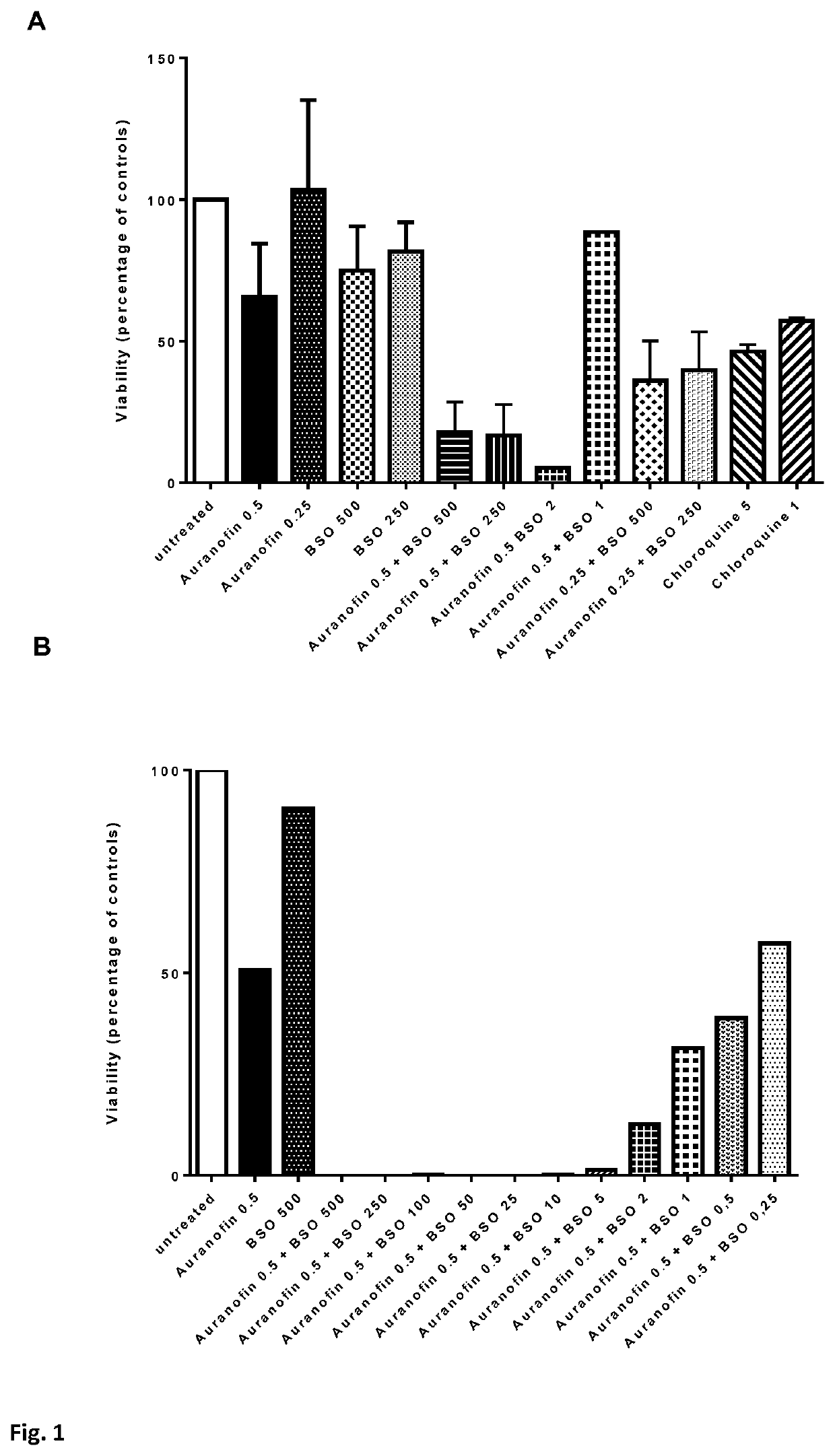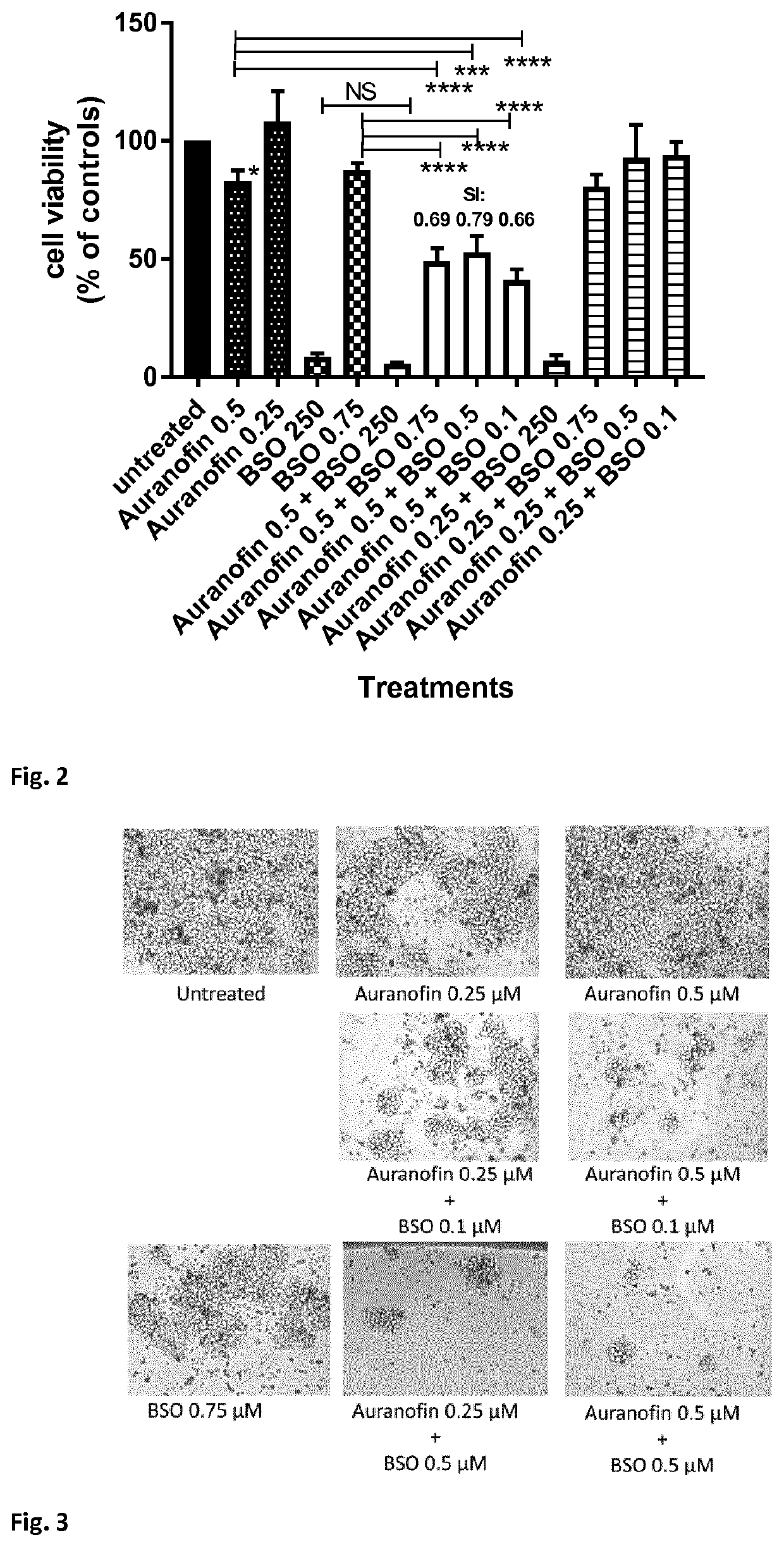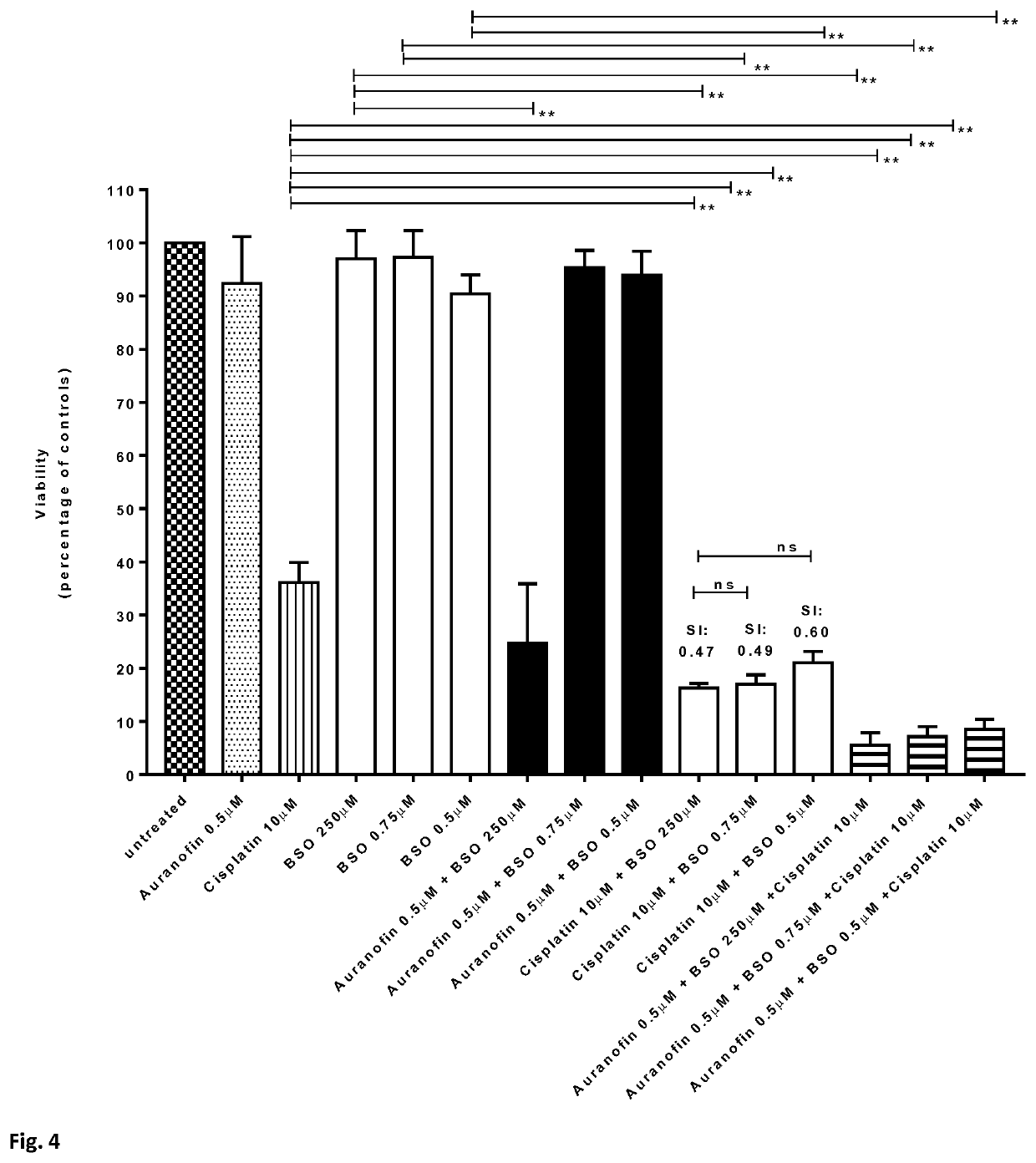Buthionine sulfoximine and a metallodrug for the treatment of cancer, HIV or a rheumatic disease
a technology of metallodrug and sulfoximine, which is applied in the field of sulfoximine and sulfoximine for the treatment of cancer, hiv or rheumatic disease, can solve the problems of reducing the ratio of bso to metallodrug and limited patients' off-target effects, so as to increase the anti-cancer
- Summary
- Abstract
- Description
- Claims
- Application Information
AI Technical Summary
Benefits of technology
Problems solved by technology
Method used
Image
Examples
example 1
[0094]In-Vitro Activity on Activated CD4+ T-Cells and Leukemia / Lymphoma
[0095]Methods. Resting CD4+ T-cells, cultured T-cell leukemic Jurkat cells and Sup-T1 cells were left untreated or incubated for 24-72 hours with various concentrations of auranofin and / or buthionine sulfoximine (BSO), or chloroquine (only CD4+ T-cells) or cisplatin (only Jurkat and Supt-T1 cells) CD4+ T-cells were then activated by adding phytohemagglutinin (2 μg / mL). Alternatively, CD4+ T-cells were first activated with anti-CD3 / anti-CD28 beads and, after 72 hours, were left untreated or were incubated with auranofin and / or buthionine sulfoximine (BSO), or chloroquine. Cell viability was determined 24-72 hours post-activation with an MTT assay (CellTiter 96® Non-Radioactive Cell Proliferation Assay) or MTS assay (CellTiter 96® AQueous One Solution Cell Proliferation Assay System; Promega). For the assay, 300×105 cells were re-suspended in 100 μL of medium and transferred to a 96-well plate. Cells were then incu...
example 2
[0102]Clinical Use
[0103]The following is a theoretical example for a typical situation wherein the BSO is used at a reduced concentration, with a clinically-acceptable dosage of auranofin to treat a patient with an HIV diagnosis.
[0104]Patient XX (male, 28 y.o.) received an HIV diagnosis in 2008. His viral load and CD4+ T-cell counts resulted to be 48,000 plasma viral RNA copies / mL and 430 cells / μL, respectively. A standard therapy consisting of tenofovir / emtricitabine and efavirenz is started. Three months later, the CD4+ T-cell count has risen to 680 cells / μL and viral load has dropped to undetectable levels. The situation is maintained essentially stable during the following nine years, and the only significant events is a switch from efavirenz to raltegravir and occasional viral blips with viral loads never rising above 500 viral RNA copies / mL.
[0105]The patient is subjected to quantification of viral DNA, the result of which is 22 copies / 106 CD4+ T-cells. The patient now starts a...
example 3
[0106]Computational Simulations.
[0107]Computational simulations of the latently HIV-infected cell dynamics were based on the system of differential equations developed by Rong and Perelson (Rong and Perelson; 2009), applying the baseline parameters as shown by the same authors. Numerical simulations were performed with the ordinary differential equations solver of the Mathlab software. The proliferation-upon-activation rate (henceforth, proliferation rate) was decreased from 1.4 day−1 (normal rate) to 0.56, 0.28 and 0.14 day−1.
[0108]The results showed that the viral reservoir decayed when the lymphocyte proliferation rate was decreased, but, unexpectedly, its decay rate was partially independent of the size of the decrease of the proliferation rate (FIG. 7). These results further support a scenario wherein low BSO dosages may be added to clinically-achievable auranofin dosages, and suggest a possibility of therapeutic success also in case this pharmacological combination should not ...
PUM
 Login to View More
Login to View More Abstract
Description
Claims
Application Information
 Login to View More
Login to View More - R&D
- Intellectual Property
- Life Sciences
- Materials
- Tech Scout
- Unparalleled Data Quality
- Higher Quality Content
- 60% Fewer Hallucinations
Browse by: Latest US Patents, China's latest patents, Technical Efficacy Thesaurus, Application Domain, Technology Topic, Popular Technical Reports.
© 2025 PatSnap. All rights reserved.Legal|Privacy policy|Modern Slavery Act Transparency Statement|Sitemap|About US| Contact US: help@patsnap.com



